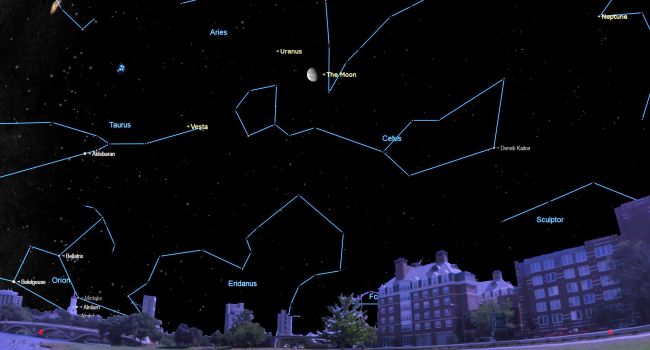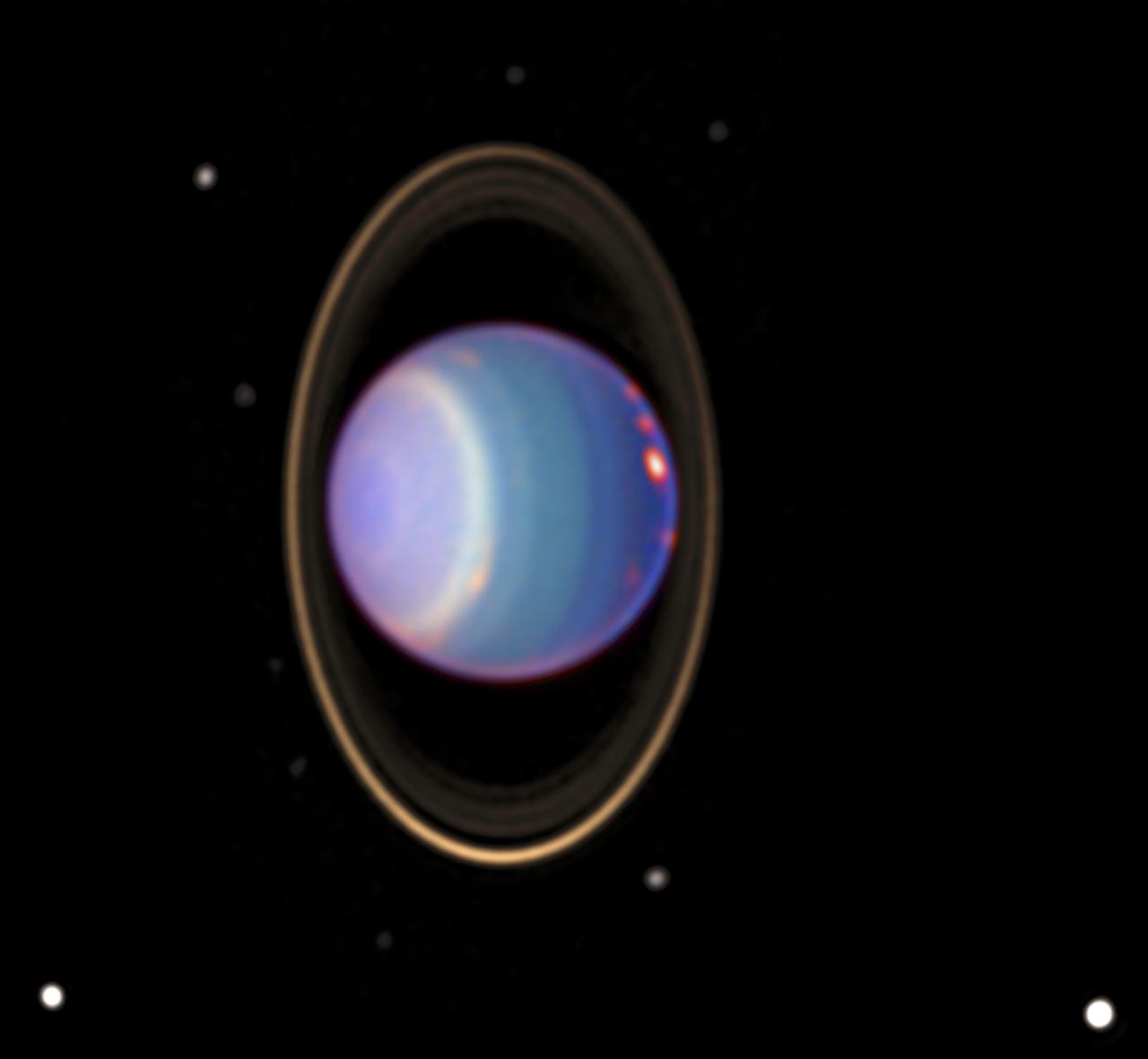Look Up! Uranus and the Waning Gibbous Moon Share the Sky

Today (Aug. 21), just before dawn, the waning gibbous moon will sit bright in the southern sky near the frigid, blue-green planet Uranus.
That planet will be faint, but skywatchers will be able to spot it with the naked eye just under 5 degrees above (to the celestial north of) the star Xi Ceti, which is located in the constellation Cetus. Skywatchers can find the moon, which will be larger than semicircle third-quarter moon but smaller than the full moon, located 6.5 degrees to the lower right (the celestial southwest) of Uranus.
The waning gibbous moon follows August's Sturgeon Moon. This full moon's name, which appears in the Old Farmer's Almanac, derives from both colonists and Algonquian-speaking tribes in North America, as sturgeon are native to both Europe and the Americas.
Related: Space Launch Calendar 2019: Sky Events, Missions & More

Unfortunately for skywatchers keen on spotting our blue, far-off planetary neighbor, Uranus is tricky to spot even on a clear, dark night. With the bright moon still fairly large in the sky, skywatchers might want to grab a pair of binoculars or (more likely) a telescope to actually see the planet, according to earthsky.org.
The moon and Uranus will be visible at night both tonight and tomorrow (Aug. 22), but they will be low in the sky at night and will be easier to spot in the predawn hours, EarthSky said.
Tonight and throughout late August and early September, skywatchers will also be able to spot the Great Square of Pegasus, a constellation that is, unsurprisingly, a big square. This constellation is a great skywatching tool because, in addition to being an easy-to-identify shape, it points to Messier 31, or the Andromeda galaxy, in the night sky.
Get the Space.com Newsletter
Breaking space news, the latest updates on rocket launches, skywatching events and more!
To find the Andromeda galaxy, first "locate the Great Square of Pegasus in your eastern sky," Earthsky said. "But instead of thinking of the Great Square as a square, think of it as a baseball diamond. Now, imagine the farthest star to the left — Alpheratz — as the third-base star. A line drawn from the first-base star through Alpheratz points in the general direction of the Andromeda galaxy."
- When, Where and How to See the Planets in the 2019 Night Sky
- The Top Skywatching Events to Look for in 2019
- Best Night-Sky Events of August 2019 (Stargazing Maps)
Follow Chelsea Gohd on Twitter @chelsea_gohd. Follow us on Twitter @Spacedotcom and on Facebook.
Join our Space Forums to keep talking space on the latest missions, night sky and more! And if you have a news tip, correction or comment, let us know at: community@space.com.

Chelsea “Foxanne” Gohd joined Space.com in 2018 and is now a Senior Writer, writing about everything from climate change to planetary science and human spaceflight in both articles and on-camera in videos. With a degree in Public Health and biological sciences, Chelsea has written and worked for institutions including the American Museum of Natural History, Scientific American, Discover Magazine Blog, Astronomy Magazine and Live Science. When not writing, editing or filming something space-y, Chelsea "Foxanne" Gohd is writing music and performing as Foxanne, even launching a song to space in 2021 with Inspiration4. You can follow her on Twitter @chelsea_gohd and @foxannemusic.









